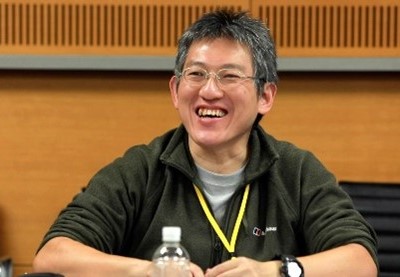Invited Talks

Professor Emeritus Kaoru Hirota
Beijing Institute of Technology, China
Title: Fuzzy Logic Control and its Application to Stepping Motor Nano-Drive
Abstract: The topics is about presenter’s lifetime research works on fuzzy control. Firstly, fuzzy control mechanism is prelected with the introductory talk of fuzzy logic. Then its demonstration/industrial applications are shown. Lastly, nano drive fuzzy controller for stepping motors is presented with video demonstrations especially from viewpoints of equiangular step in high resolution and motor vibration.

Professor Chenguang (Charlie) Yang
Bristol Robotics Laboratory, University of the West of England, UK
Title: Human-like Robot Control Design and Manipulation Skill Learning
Abstract: This talk will introduce our advance in the field of robot skill learning and human-robot shared control. We use control theory to model the control mechanism of motor neurons to assist us developing human-like robot controllers so that the robot can realize variable impedance control to adaptively physically-interact with the changing environment. I will further talk about recent work on learning from demonstration which are generally used to efficiently transfer modularized skills to robots using multi-modal information such as surface electromyography signals and contact forces, enhancing the effectiveness of skill reproduction in different situations. Besides, with the help of deep learning, we design a simulation twin-based method that can transfer the trained skills in simulation to physical robot effectively.

Professor Emeritus Shuji Hashimoto
Waseda University, Japan

Professor Stephan Schlögl
Management Center Innsbruck (MCI), Austria

Dr. Lili Aunimo
Haaga-Helia University of Applied Sciences, Finland

Professor Pitoyo Hartono
Chukyo University in Nagoya, Japan
In the past few years, the proliferation of AI in various aspects of human life has been tremendous. Many forms of AI are utilized to automatized various machines and algorithms, often leaving humans from the decision-making loops. However, humans often have experiences, common-sense, personal preference and even bias that may be beneficial for training AI and executing decision-making. Recently, neural networks with topological internal representations are gaining attentions. In this talk, a model of neural network with 2-dimensional topological hidden layer will be explained. This neural network organizes the high-dimensional inputs into their topological representations while also taking their context (labels) into account. The low dimensionality of this representation allows human to transfer their common sense, experiences, and preferences into the neural network, thus allowing a new relation between human and AI that leads to collaborative AI. Some example of human-neural network collaborations will be explained.

Robert Lovas, PhD habil.
Institute for Cyber-Physical Systems John von Neumann Faculty of Informatics, Óbuda University, Hungary

Michal Gregor
Kempelen Institute of Intelligent Technologies & University of Žilina

Assoc. prof. Maryam Alimardani
Tilburg University, Netherlands

Professor Cindy L. Bethel, Ph.D.
Mississippi State University, USA

Kateřina Lesch, PhD.
Charles University in Prague, Czech Republic

Professor Okyay Kaynak
Turkish Academy of Sciences, Turkey
Title: Qua Vadis AI?
Abstract: During the last two decades, profound technological changes have occurred around us, supported by disruptive advances both on the software and hardware sides. Additionally, we have witnessed a cross-fertilization of concepts and an amalgamation of information, communication, and control technology-driven approaches. This has led to what is termed as digital transformation, i.e., the integration of digital technology into all areas of business, fundamentally changing how companies operate and deliver value to customers. The most recent development is integrating Artificial Intelligence (AI) in digital transformation as the primary enabler and the facilitator. It is expected that the applications of AI will truly transform our world and impact all facets of society, economy, living, working, healthcare and technology.
The study of artificial intelligence (AI) has been a continuous endeavor of scientists and engineers for over 65 years. The simple contention is that human-created machines can do more than just labor-intensive work; they can develop human-like intelligence. AI has been very appealing as it aligns with the nature of human beings in terms of their never-satisfied demands for higher productivity on the one hand and, on the other hand, the curiosity of how we understand and try to change the world. Having gone through several historical stages with several winters, AI has become a leading technology today and plays novel roles like never. Therefore, it is time to discuss the past, the present, and the future of both the AI tools and the AI “beings” at this juncture. In this presentation, in addition to the technical aspects of AI technology in short to mid-term, thoughts and insights are also presented regarding the symbiotic relationship of AI and humans in the long run.